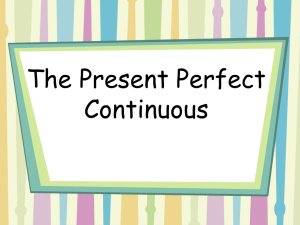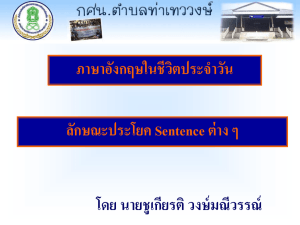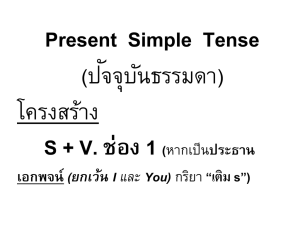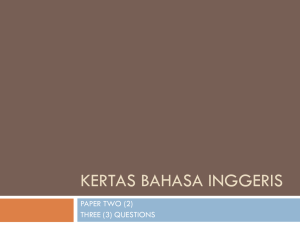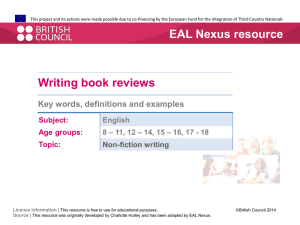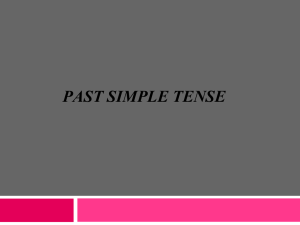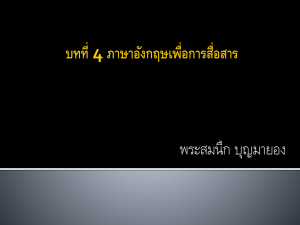4.ทำไมต้องเติม s หรือ es
advertisement
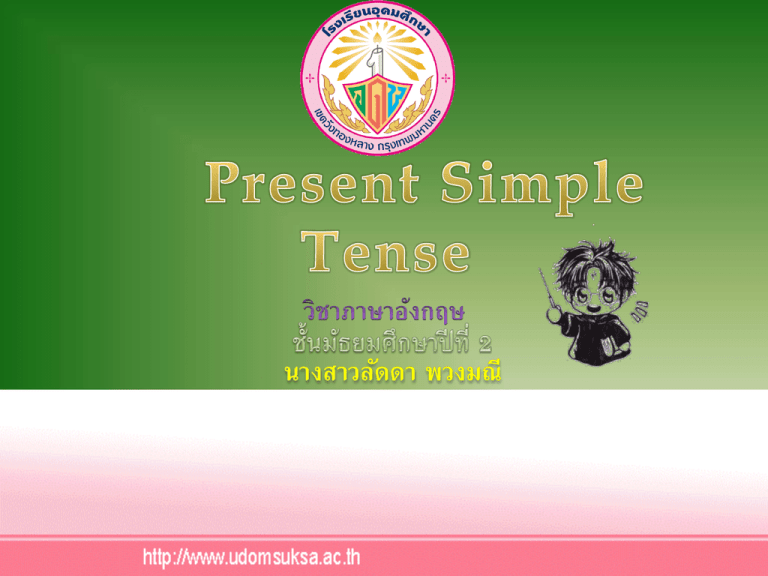
นางสาวลัดดา พวงมณี Adverbs of Frequency ในประโยค Present 1.ความหมายของ Present Simple Tense คือ Tense ที่ใช้พดู ถึงสิ่ งที่เป็ นความจริ งโดยอาจจะเป็ นความจริ งในขณะนั้น เช่น ความสามารถเฉพาะอย่างของบุคคลหนึ่ งหรื อกิจวัตรประจาวันของบุคคลหรื อสิ่ ง ที่เป็ นความจริ งตลอดกาล (ปรากฏการณ์ทางธรรมชาติ) หลักการใช้ 1) ใช้ กบั เหตุการณ์ท่กี ระทาซา้ ๆ เป็ นประเพณีและเป็ นนิสยั (Repeated actions , customs and habits) 2) ใช้ กบั เหตุการณ์ท่เี ป็ นจริงเสมอ (universal truth) 3) ใช้ กบั ความสามารถ (ability) 4) ใช้ แทน Future หลังคา if , unless, in case ในขณะที่ประโยค เงื่อนไข และคา when , until, as soon as 5) คากริยาบางคน เราจะไม่ใช้ รูป present continuous tense แม้ ว่า เหตุการณ์น้ันจะกาลังเกิดขึ้นหรือกาลังดาเนินอยู่ในปัจจุบันก็ตาม เช่น verb to be 6) ใช้ กบั adverbs of time การใช้ Adverbs of Frequency ในประโยค 1. โดยปกติจะวางคาดังกล่าวหน้ า คากริยาPresent Simple Tense นันๆไปแต่จะวางไว้ หลัง is,am,are,can,must,may,shouldฯลฯ ต้ องแยกก่อนว่าเป็ นคานามหรือกริยา ถ้ าเป็ นคานาม เติม –s, -es จะแปลว่านามตัวนั้นมีมากกว่า หนึ่งเป็ นนามพหูพจน์ เช่น Students นักเรียน cars รถยนต์ แต่ถ้าคานามนั้นลงท้ ายด้ วย s, s, sh, ch, x, z ก็ให้ เติม –es ให้ สงั เกตจากเสียงถ้ าเติม –s เวลาอ่านออกเสียงจะฟังดูแปลก a bus เป็ น buses รถประจาทาง a glass เป็ น glasses แก้ ว a watch เป็ น watches นาฬิกาข้ อมือ 5. Present Simple Tense ในรูปประโยคบอกเล่า ประโยคบอกเล่า หมายถึงประโยคที่พูดหรือเล่าเรื่องราวต่างๆให้ ฟัง เช่น ฉันดื่มนา้ ทุกๆวัน ในภาษาอังกฤษรูปกริยาที่ใช้ ต้องเป็ นช่องที่ 1 ( V .1 ) ถ้ าประธานเป็ น เอกพจน์กริยาต้ องเติม s หรือ es ส่วนประธานพหูพจน์ ( รวมทั้ง I และ You ) กริยาไม่ต้องเติมให้ คงรูปเดิม โครงสร้ างประโยค Present Simple Tense ประธาน + กริยา + กรรม + คาบอกเวลา 6. Present Simple Tense ในรูปประโยคปฏิเสธ 1.ประโยคบอกเล่าที่มี verb to be สามารถทาให้ เป็ นประโยคปฏิเสธได้ โดยการเติม not หลัง verb to be ทันที . ประโยคบอกเล่า (Affirmative) ประโยคปฏิเสธ (Negative) She is a nurse. She is not a nurse. 2. ประโยคบอกเล่าที่มี has หรือคากริยาที่เติม s, es สามารถทาให้ เป็ นประโยค ปฏิเสธได้ โดยใช้ does not (doesn’t) วางระหว่างประธานและกริยาแท้ และ กริยาแท้ ต้องเปลี่ยนจาก has เป็ น have หรือต้ องตัด s, es ออกเพื่อกลับไปใช้ กริยาช่องที่ 1 ตามเดิม ประโยคบอกเล่า (Affirmative) She has a pen. ประโยคปฏิเสธ (Negative) She does not have a pen. 3. ประโยคบอกเล่าที่มี have หรือคากริยาที่ไม่เติม s, es สามารถทาให้ เป็ น ประโยคปฏิเสธได้ โดยใช้ do not (don’t) วางระหว่างประธานและกริยาแท้ ประโยคบอกเล่า (Affirmative) We have breakfast at 7.30. ( ประโยคปฏิเสธ (Negative) We do not have breakfast at 7.30. Fill in the blanks with the correct form of words given: leaves (leave) at 17.25 from platform 3. 1.Your train _______ works (work) eight hours a day. 2.Joanne ____________ falls 3. Rain seldom _________(fall) in the Sahara. comes 4.The monsoon season ______(come)once or twice a year. gets 5.The weather ______(get) very cold in Moscow in the winter. 1.They …….the students. a. is b. am c. are d. was 2.Dang …….a farmer. a. is b. was c. are d. were 3.…….you and Joe students here ? a. is b. are c. Do d. Dose 4.Where …..your home,Prateep ? a. are b. was c. do d. is 5. The bird always …….in the sky. a. fly b. flys c. flyes d. flies 6. My father …….to the church every Sunday. a. go b. goes c. going d. went 7. Wilai……..the watch for her mather. a. buy b. buies c. buys d. buyes 8. I and my sister always…….six o’clock every Morning. a. get up b. gets up c. got up d. gots up 9. …… she ….to the market everyday? a. is ,go b. is, goes c. Dose , go d. Dose , goes 10. I and you ……close friends. a. am b. are c. we d. was Thank you The end


